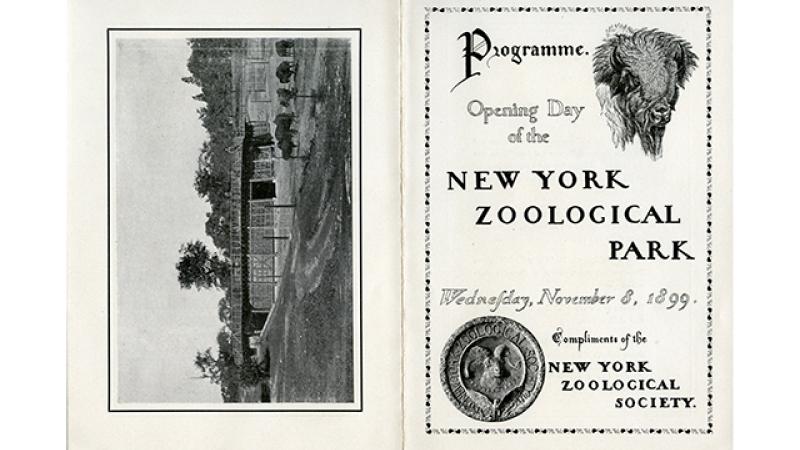What’s On Your Wish List? Archives Edition
Illustration of Chiasmodon niger stomach contents by NYZS field staff artist Else Bostelmann, 1934
All images reproduced by permission of the Wildlife Conservation Society Archives
Illustration of Chiasmodon niger stomach contents by NYZS field staff artist Else Bostelmann, 1934
All images reproduced by permission of the Wildlife Conservation Society Archives
The first in a series of posts looking at how sustainability for collections can also be sustainable for institutions.
Where would you go if you wanted to write the history of a zoo?
To its archives, of course!
In New York, this place is the Wildlife Conservation Society Library and Archives (WCS), which houses a breadth of material relating to the history of the organization. Founded in 1895 as the New York Zoological Society, the organization runs the Bronx Zoo and the New York Aquarium, as well as the Central Park, Prospect Park, and Queens Zoos. Their collection includes institutional records, among them materials about exhibits at these locations as well as about WCS’s wildlife conservation fieldwork, together with zoological memorabilia, artwork, and more.
In 2015, the WCS Archives was awarded an NEH Sustaining Cultural Heritage Collections planning grant to develop a Conceptual Preservation Design Plan for the relocation of their archives. Bringing together specialists in archives, facilities, preservation environmental management, mechanical systems engineering, architecture, and sustainable design, WCS conceived of its ideal space.
In the years leading up this grant project, WCS had invested in its archives, expanding to a staff of three. Yet, they write that “in spite of improvements [to storage spaces] developed by Archives staff through preservation practices and policies, we have been aware that that we are fighting an uphill battle.”* The current storage environment is insufficient with regard to space and climate control needs for the collections, with numerous other difficulties including work areas for visiting researchers and proximity of staff offices to storage.
In response, WCS administration proposed renovation of currently unused space in an existing building. Its SCHC planning grant and resulting white paper outline the renovation plan for that space as well as lessons learned through this initial phase.
Some of the WCS Archives’s hot button issues included:
Preservation Climate: The new storage area would maintain a range of 45-60 degrees Fahrenheit and 35-55% relative humidity, with seasonal set points. This flexibility will decrease the work load on mechanical systems and save energy costs. Climate for work areas takes “human comfort” into account, with goals of 65-70 degrees Fahrenheit and 35-50% relative humidity year-round. The Archives has access to cold storage off site, so it plans to include three mobile freezer units to house heat-sensitive materials during processing.
Storage Space: The plan considers thirty years of collections growth and proposes to install compact shelving units, flat files, and art racks. The compact shelving would be high enough off the floor to account for possible minor flooding. The height was also determined with energy efficiency in mind, balancing needs for air flow, sprinklers, and lighting with minimizing unused space.
Work Space: The staff would have offices and processing areas adjacent to storage, a big improvement from the current situation in which offices are in a separate building! There would also be multipurpose spaces for researchers, classes, and exhibits. WCS would plan to utilize the building’s high ceilings and create more floor space by installing a mezzanine.
Cost and Energy Savings: It almost goes without saying that renovating an existing space is more cost effective than a new build – especially in New York City. The new archives would tap into existing microturbines, a green and cost-effective energy source. A box-within-a-box design, in which freestanding interior walls will sit six inches from the existing walls, would be a high up-front cost. In the long term, however, this design should make preventive conservation more economically sustainable by better insulating the archives and acting as a vapor barrier.
This first “Preparatory” phase also resulted in cost estimates for the next two phases: “Design” and “Final Production.” The WCS Archive staff reflected that this planning grant will be essential for gaining support for the next phases from their administration and, in the short term, has strengthened relationships and communication between Archives and Facilities.
Do you have a long-term collections care goal that could benefit from a planning grant? Learn from others! The white paper from this project and other NEH funded projects are available online in the Funded Projects Query.
*Madeleine Thompson, “Development of the WCS Archives Conceptual Preservation Design Plan White Paper” 1 November 2016, p. 1.
